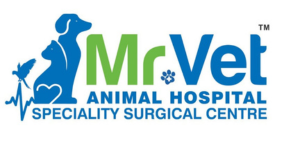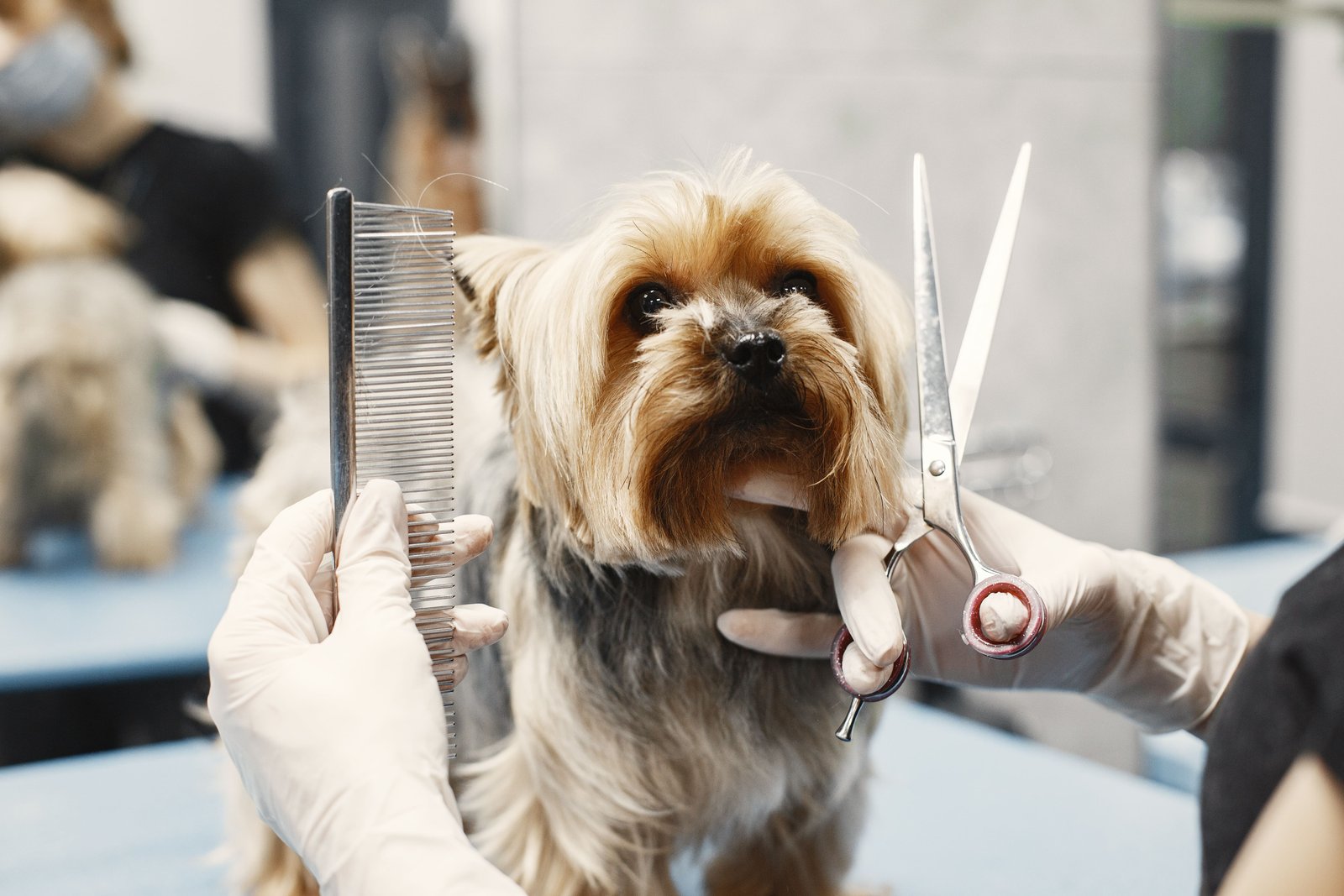Dogs, often referred to as man’s best friend, bring immeasurable joy and companionship into our lives. As responsible pet owners, ensuring the holistic well-being of our furry friends becomes a top priority. A crucial aspect of this responsibility is grooming, not just as a means of maintaining their physical appearance but as a vital component of their overall health and happiness.
I. Introduction
Taking care of your dog involves more than meets the eye. Beyond the basics of providing food and shelter, grooming emerges as a fundamental aspect that significantly contributes to the overall health and happiness of your pup. It’s not merely a chore; it’s a way of expressing love and care for your four-legged companion.
Importance of Dog Grooming: Beyond Appearances
While a clean and well-groomed dog certainly looks great, the benefits of grooming extend far beyond aesthetics. Here’s a deeper dive into why regular grooming is essential for your dog’s well-being:
- Improved Coat Health: Brushing and bathing help remove dead hair, dirt, and debris, promoting healthy fur growth. This also allows natural oils to be distributed evenly, keeping the coat shiny and strong.
- Reduced Shedding: Brushing removes loose hair before it sheds around the house, making your life easier and keeping furniture fur-free.
- Skin Health: Regular grooming allows for inspection of your dog’s skin. This helps identify potential problems like fleas, ticks, rashes, or infections early on, allowing for prompt treatment.
- Prevents Matting: Matted fur can be uncomfortable for your dog, pull on their skin, and trap moisture, leading to irritation and even infections. Grooming helps prevent mats from forming.
- Improved Dental Health: Regular teeth brushing, a part of many grooming routines, helps remove plaque and tartar buildup, reducing the risk of dental disease.
- Early Detection of Health Problems: During grooming, you might notice lumps, bumps, or other abnormalities that could be signs of underlying health issues. Early detection is crucial for better treatment outcomes.
- Enhanced Comfort and Happiness: A clean and healthy dog feels better. Regular grooming can improve your dog’s mood and overall well-being.
- Strengthens the Bond: Regular grooming sessions become a bonding experience for you and your dog. The positive association with grooming can make it a less stressful experience for them.
II. Select A Spot
While convenience might be a factor, choosing the perfect spot for dog grooming goes much deeper. It’s about creating a calm and stress-free environment that benefits both you and your furry friend. Imagine a quiet, well-lit space where your dog feels relaxed and comfortable. This positive atmosphere can transform grooming from a chore into a bonding ritual. Think of it as a special time for just the two of you, where positive reinforcement with praise and treats creates a happy association with grooming. By selecting the right spot, you’re not just making the process easier, you’re laying the foundation for a stress-free experience that strengthens your connection with your beloved pup.
III. Brush Your Dog’s Fur
Don’t be fooled by the fluffy facade! Brushing your dog’s fur goes far beyond a simple cosmetic touch-up. It’s a fundamental practice that promotes your pup’s overall health. Think of it like a massage – brushing stimulates blood circulation throughout their skin, keeping them feeling good. But that’s not all! Brushing also helps distribute natural oils, nature’s built-in conditioner, for a healthy and shiny coat. Perhaps most importantly, it prevents uncomfortable and potentially painful matting from forming. So, regardless of your dog’s breed or fur length, incorporating regular brushing into their routine is a significant step towards ensuring their long-term well-being.
IV. Bathe with Care
Bath time for your furry friend is an important part of their grooming routine, but it’s not a one-size-fits-all situation. While keeping your pup clean is essential, overdoing it can actually backfire. Frequent baths can strip away natural oils from their skin, leaving them dry and itchy. The secret lies in understanding your dog’s individual needs. Factors like breed, activity level, and even the time of year can influence how often they need a bath. Instead of a rigid schedule, opt for a more mindful approach. Use a gentle, dog-specific shampoo to avoid irritation, and focus on bathing them only when they get truly dirty or smelly. Remember, a balanced approach to bath time keeps your dog clean and comfortable.
V. Trim Nails Safely
Nail trimming can be a nerve-wracking experience for both you and your pup. Imagine those sharp clicks on the floor and the worry of accidentally clipping the sensitive quick (the pink part of the nail). However, neglecting nail trims can cause serious problems down the road. Long nails can be uncomfortable for your dog to walk on, and may even get snagged and ripped, causing pain and bleeding. The key to conquering this task lies in preparation. Invest in a good pair of dog nail clippers designed for your dog’s size. Familiarize yourself with the proper clipping technique to avoid the quick. With a little practice and patience, you can transform nail trimming from a stressful ordeal into a safe and essential part of your dog’s grooming routine.
VI. Hair Trimming
When it comes to hair trimming, understanding your furry friend’s specific needs is key. Some breeds, like poodles or Shih Tzus, have coats that grow continuously and require regular trims to maintain a comfortable length and prevent matting. Leaving their fur unchecked can lead to discomfort, overheating, and even skin irritation. On the other hand, breeds with short, double coats may only need minimal trimming, focusing on areas prone to matting like the tail or behind the ears. Feeling unsure? Don’t hesitate to consult a professional groomer. They can assess your dog’s coat type and recommend the most suitable trimming schedule and technique to keep your pup looking and feeling their best.
VII. Paw Care
Don’t neglect those paws! Your dog’s paws are their tireless companions, navigating rough terrain, hot pavement, and everything in between. Regular paw care becomes essential to ensure their comfort and well-being. Taking the time to examine their little footpads for any cuts, debris, or pesky foxtails can prevent future pain and discomfort. Keeping their paws clean after walks removes dirt, allergens, and potential irritants. But beyond the practicalities, paw care can be a wonderful bonding experience. Gently massaging their paws during cleaning allows you to connect with your furry friend and build a trusting relationship. So, the next time you groom your dog, remember, a little TLC for their paws goes a long way.
VIII. Ear Care
Don’t forget those floppy ears! Regular ear checks are a crucial part of your dog’s grooming routine. These furry funnels can be prone to infections from moisture buildup, dirt, or even pesky ear mites. By incorporating ear checks into your grooming ritual, you can identify any potential problems early on. Remember, prevention is key! Using veterinarian-approved ear cleaning solutions and gentle cleaning techniques recommended by your vet will keep your dog’s ears clean and healthy. Think of it as a preventative measure that saves your pup from discomfort and potential infections down the road.
IX. Check for Fleas and Ticks
Those pesky fleas and ticks can turn playtime into a nightmare for your furry friend. These uninvited guests aren’t just a nuisance – they can transmit diseases that pose serious health risks to your dog. The good news is that vigilance is your best defense. Regularly checking your dog’s fur for fleas, ticks, or signs of scratching can help you catch an infestation early on. Don’t forget to inspect hard-to-reach areas like their ears, paws, and between their toes. Prevention is even better! Consult your veterinarian about the best flea and tick preventative for your dog’s lifestyle and needs. By incorporating regular checks and preventative measures, you can keep your dog happy, healthy, and free from those nasty parasites.
X. Teeth Care
While we often focus on a dog’s shiny coat and wagging tail, their dental health is equally important for their overall well-being. Neglecting their teeth can lead to pain, bad breath, and even serious health problems. The good news is that promoting good oral hygiene doesn’t have to be a daily struggle. Gradually introduce teeth brushing with dog-friendly toothpaste, making it a positive experience with praise and treats. Dental chews and appropriate chew toys can also play a role in removing plaque and tartar buildup. By incorporating these simple steps into your dog’s routine, you’re not just keeping their breath fresh, you’re contributing to their long-term health and happiness.
XI. Staying Calm and Positive
Patience and positivity are key ingredients for successful grooming sessions, especially for those furry friends who find the experience stressful. Remember, grooming isn’t just about a clean coat; it’s about building trust and strengthening your bond. Transform the atmosphere from a chore into a positive experience with calming music and a gentle touch. Reward good behavior with praise and yummy treats, making grooming something your dog looks forward to. By staying calm and positive throughout the process, you’ll not only achieve a sparkling clean pup but also create a happy and stress-free experience that reinforces your loving connection.
XII. Anal Gland Expression
Let’s talk about something not as glamorous, but equally important: anal gland expression. While it may not be the most pleasant topic, it’s a crucial part of your dog’s hygiene. These glands, located near their rear end, naturally release a scent for communication. However, sometimes they can become impacted, causing discomfort and irritation for your pup. Signs of this include scooting, licking the area excessively, or difficulty pooping. Understanding the importance of anal gland expression is key. If you’re unsure about doing it yourself, don’t hesitate to seek professional help from your veterinarian or groomer. They can express the glands safely and effectively, ensuring your dog’s comfort and preventing potential health problems. Remember, taking care of all your dog’s needs, even the less pleasant ones, shows your love and dedication to their well-being.
XIII. Regular Vet Check-ups
These check-ups are the foundation of proactive pet care. While grooming keeps your dog looking and feeling their best on the outside, vet visits ensure their well-being on the inside. Think of it as a chance for early detection of potential health concerns. Through comprehensive examinations and consultations, your veterinarian can identify and address any underlying issues before they become serious. Regular veterinary care is an investment in your furry friend’s long and healthy life, giving you more happy years together.
XIV. Conclusion
Incorporating these 12 steps into your routine goes beyond maintaining a well-groomed appearance. It’s about fostering a strong bond with your pup and ensuring their overall happiness and health. Grooming is not a chore; it’s an expression of love and commitment to your loyal companion.

